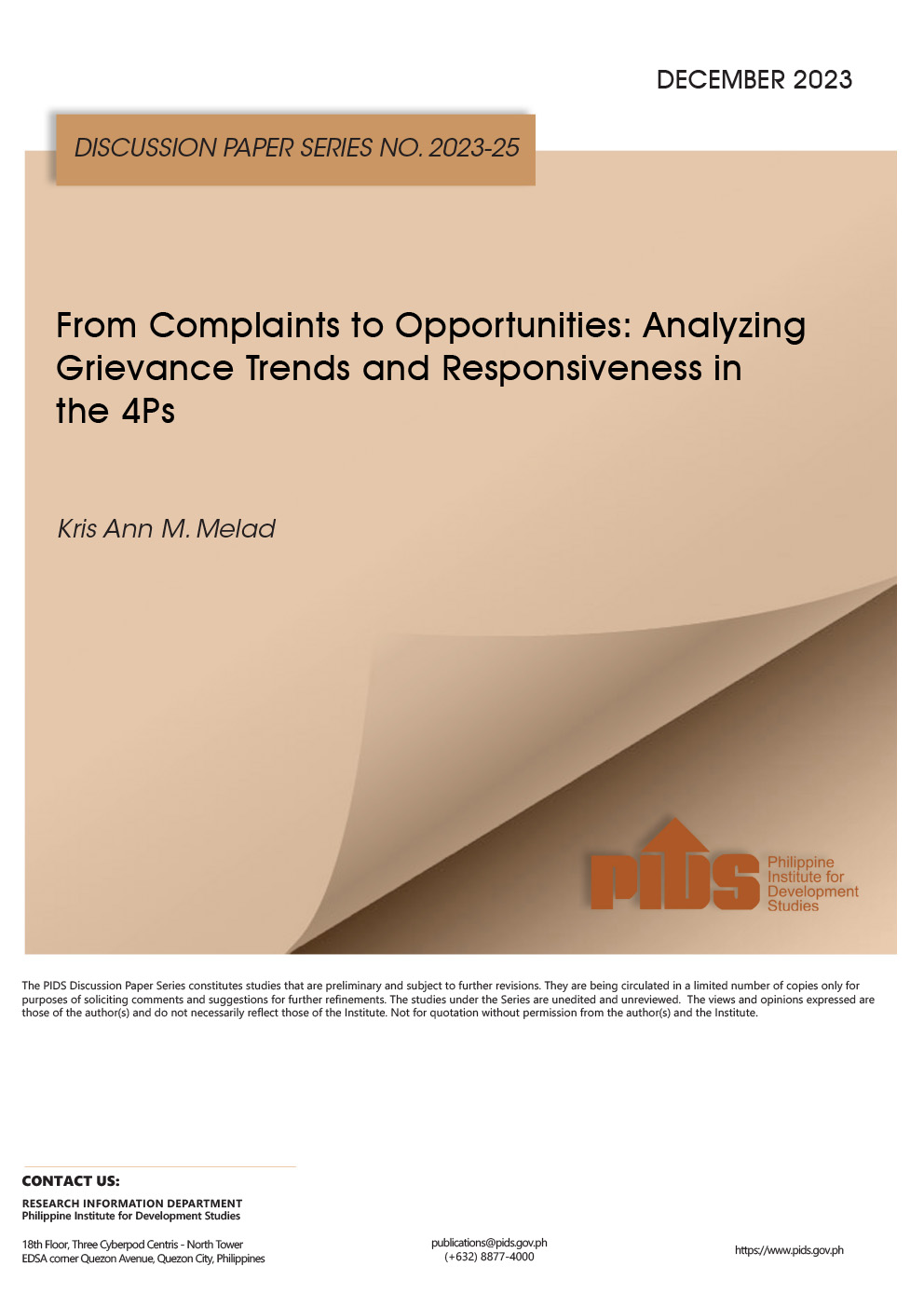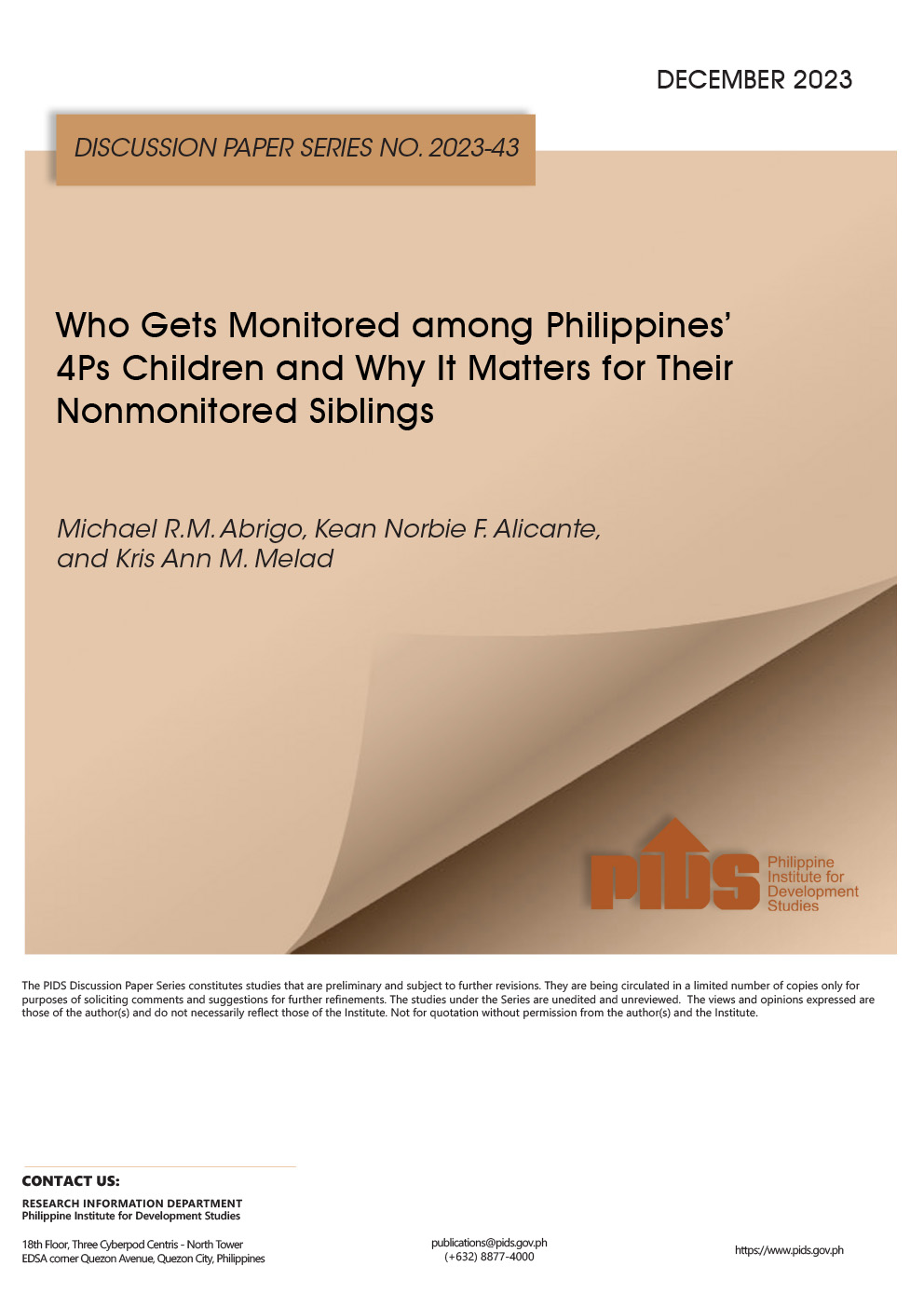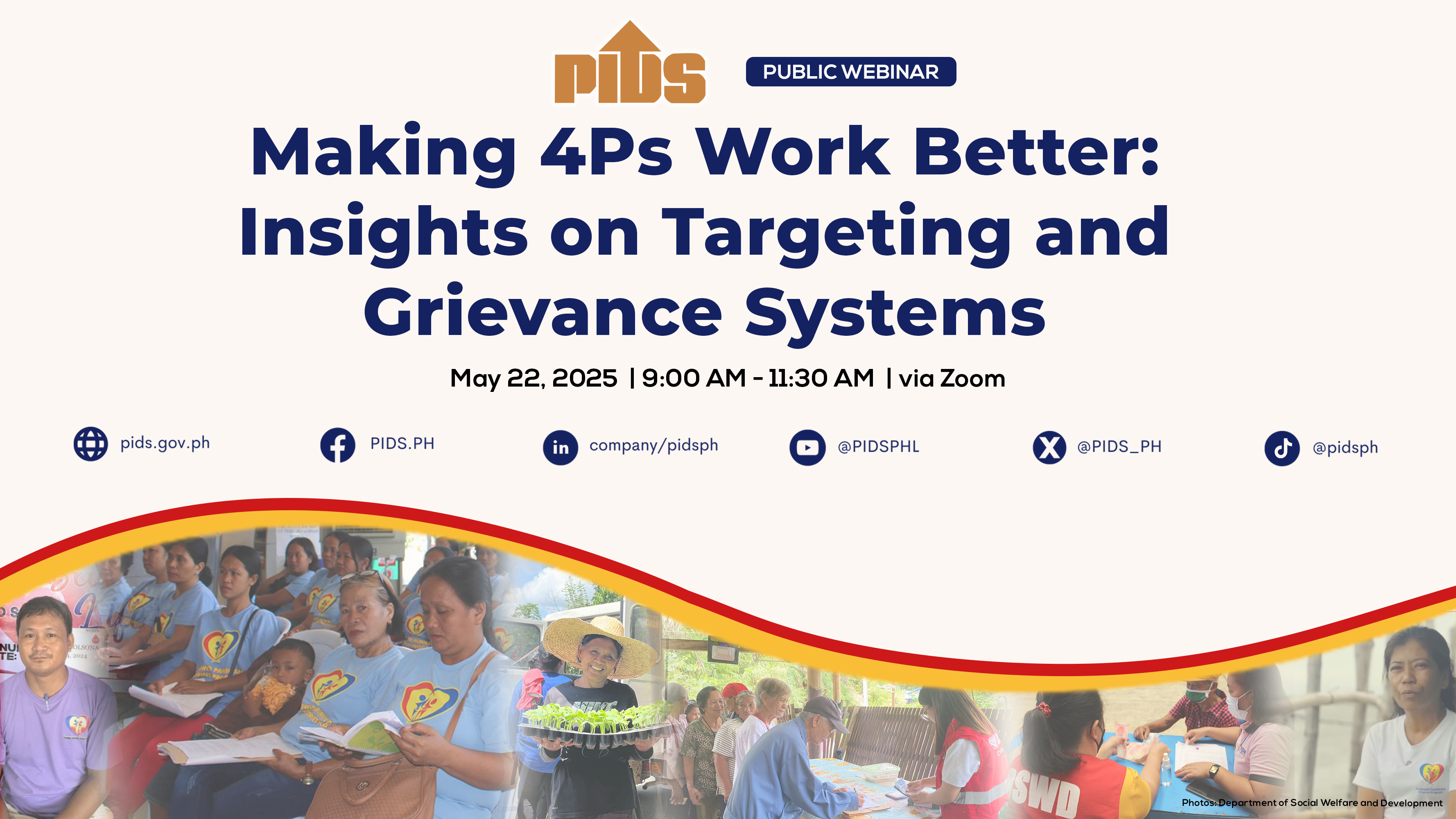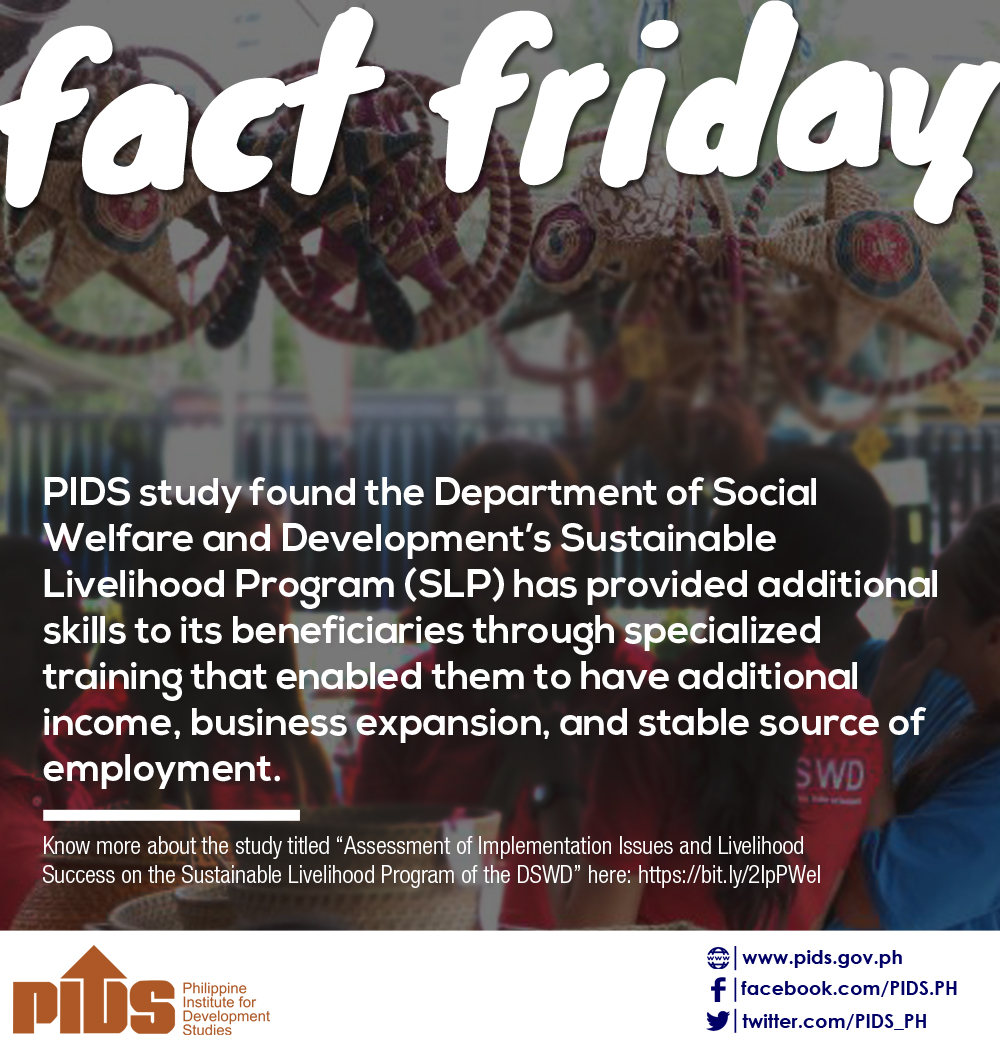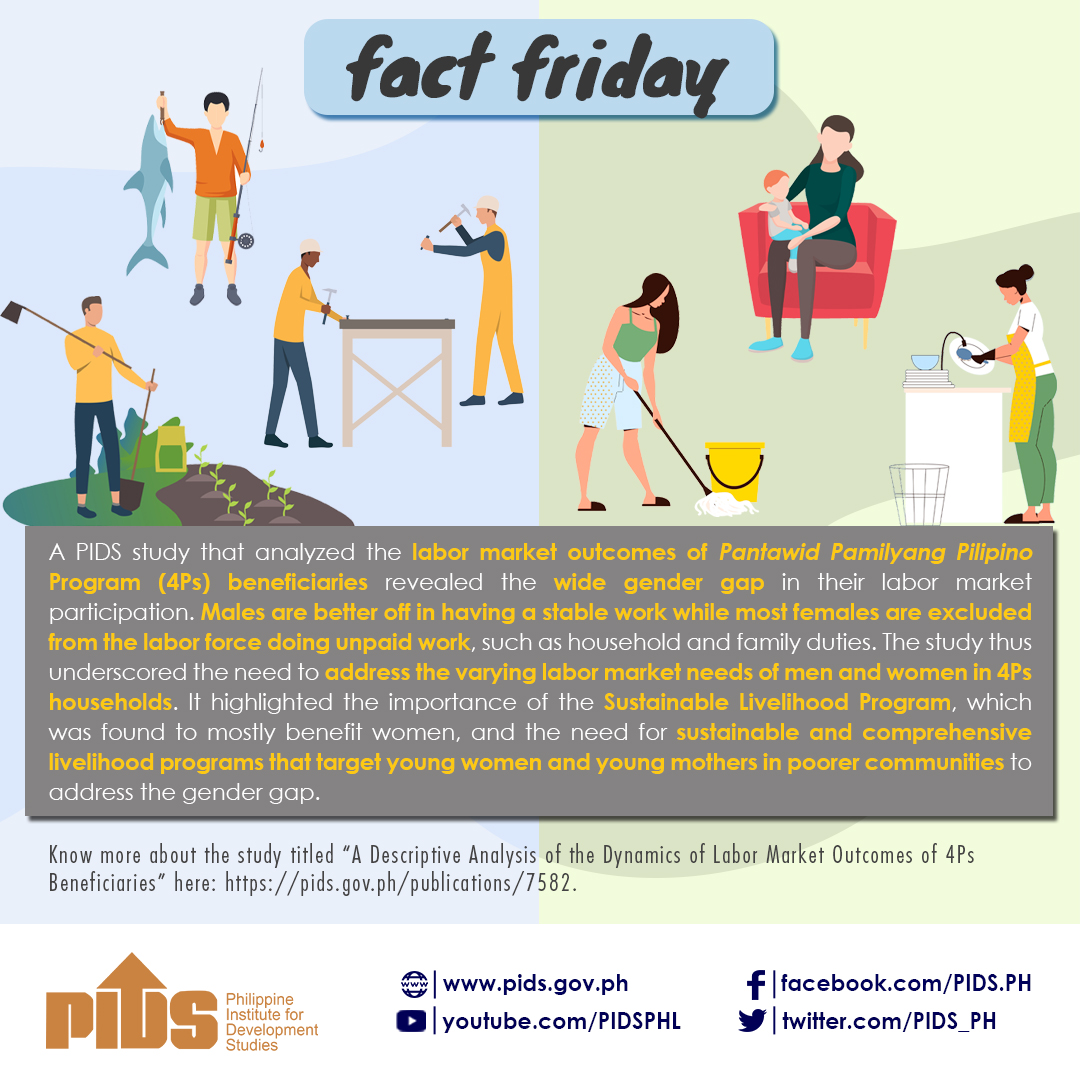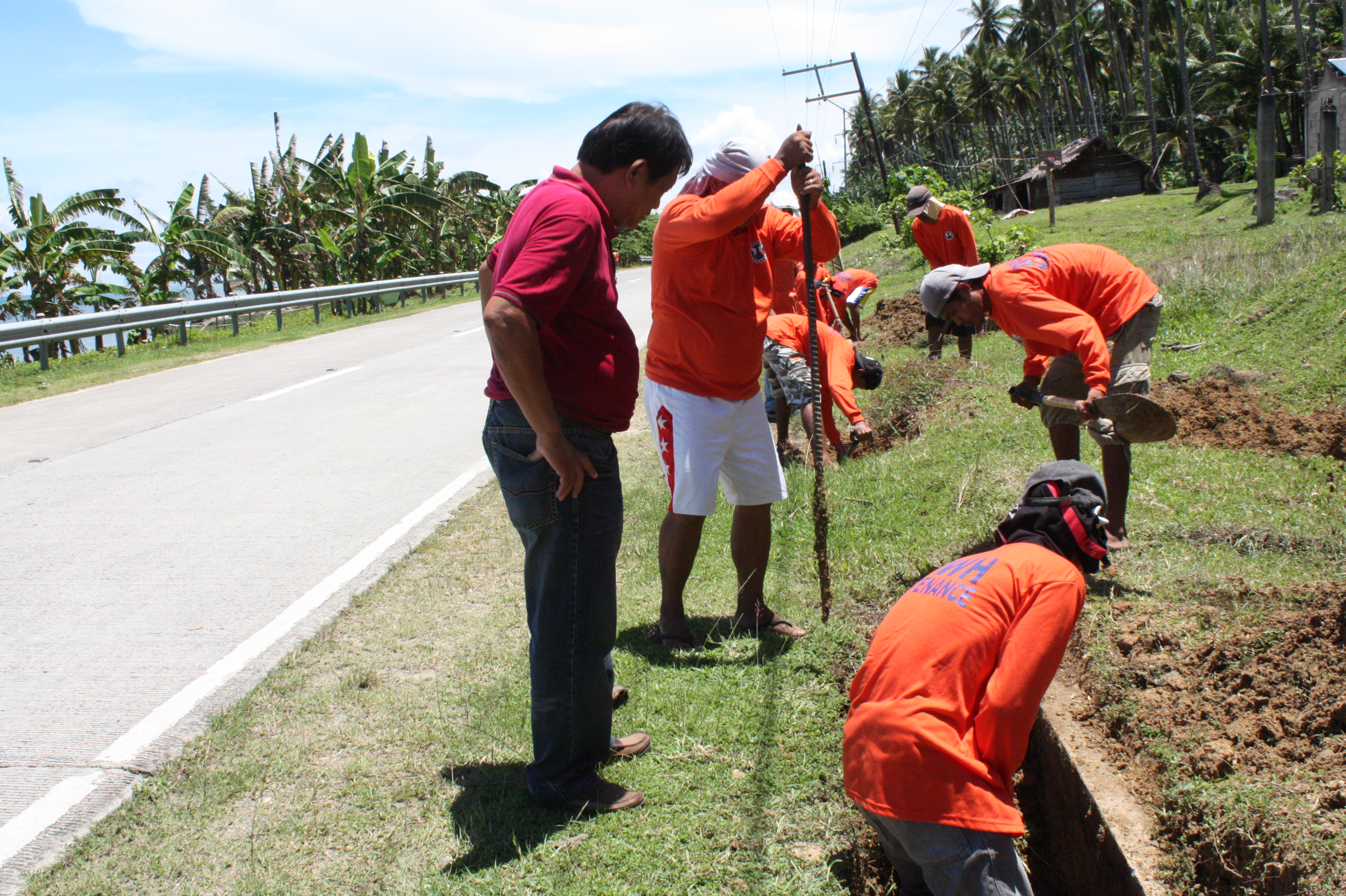
A recent impact evaluation study by state think Philippine Institute for Development Studies (PIDS) said the mechanism for choosing beneficiaries of the Sustainable Livelihood Program (SLP), a component of the Pantawid Pamilyang Pilipino Program (4Ps), must be improved to improve gains from the program.
According to PIDS Vice President Marife Ballesteros and Senior Research Fellow Aniceto Orbeta, the employment facilitation program has been well-received by its target participants. It is also regarded by many participants as a critical conduit for their employment. However, they noted that aside from the limitations of employment facilitation, the program also has poor targeting mechanism.
The overall objective of SLP is to help beneficiaries of 4Ps increase their income, become more self-sufficient, and graduate from the 4Ps. The first track of the program involves microenterprise development, which focuses on providing assistance and resources for beneficiaries to build and expand their businesses.
The second track, which is the focus of the PIDS study, is the employment facilitation scheme. This is intended for the 4Ps beneficiaries who want to find employment. The SLP project development officers are in-charge of finding job opportunities that match the skills of these 4Ps beneficiaries.
Together, both tracks aim to "link the 4Ps families to income-generating opportunities, allowing them to sustain their economic development and transition from survival to self-sufficiency."
The employment facilitation scheme provides five different services: pre-employment counseling, skills training, referral, pre-employment assistance fund, and cash for building livelihood assets.
As of December 2015, the SLP had served 22 percent of the total families enrolled in the 4Ps, or close to 1 million families. However, only 14 percent of them, or around 130,000 families, were served through the employment facilitation track.
According to the authors, the "low takeup" was unusual, considering that the risks involved in the employment facilitation track is lower compared to the microenterprise component of the project. Thus, the authors suggested that the programs' design and implementation, particularly the steps involved in targeting participants, be reviewed and re-evaluated.
"Participation to the SLP is mainly determined by age and willingness to participate. On the other hand, selection to the MD (microenterprise development) or EF (employment facilitation) track is mainly the choice of the participant," according to the authors.
"What these steps lack is in-depth assessments of participants' suitability with each track. This gap in understanding of contextual and personal issues, which include distance between job opportunities and residence, limited job opportunities in an area or field, physical attributes, and family responsibilities, negatively skews the success rate of the EF intervention," the PIDS paper suggested.
The authors also noted that the performance of project officers are based on the number of job matches and livelihoods they facilitate. Research data show there is a tendency for program officers to encourage their participants to choose microenterprise development. This is because the former does not require as much effort from them compared to looking for available and compatible employment.
"The job opportunities are limited. Majority of them are in public works, which are provided largely for retirees or older beneficiaries, acting more like safety nets rather than gainful employment," the authors noted.
Likewise, they underscored that other variables like geography and local politics make it difficult to build employment partnerships and facilitate employment.
"There is a need to define the Department of Social Welfare and Development’s role in facilitating employment relative to other government agencies and programs," the authors said.
However, they also pointed out that compelling the DSWD to reorient its functions to serve the SLP doubles the agency’s requirement on manpower resources and effort.
Thus, part of the author's recommendations is for DSWD to explore interagency cooperation. The Department of Labor and Employment, for one, has a labor market program aimed at increasing employment opportunities for the marginalized and vulnerable sectors.
As for the program itself, they suggested creating a better mechanism for identifying participants in the employment facilitation track, with focus on employment-directed training. Training budget, according to the authors, should vary based on the quality or employment training needs. Likewise, developing opportunities and modalities for linking with other employment programs by the government must also be pursued. ###
If you wish to know more about this study, you may download the Discussion Paper here.
Thumbnail from the DPWH website.
According to PIDS Vice President Marife Ballesteros and Senior Research Fellow Aniceto Orbeta, the employment facilitation program has been well-received by its target participants. It is also regarded by many participants as a critical conduit for their employment. However, they noted that aside from the limitations of employment facilitation, the program also has poor targeting mechanism.
The overall objective of SLP is to help beneficiaries of 4Ps increase their income, become more self-sufficient, and graduate from the 4Ps. The first track of the program involves microenterprise development, which focuses on providing assistance and resources for beneficiaries to build and expand their businesses.
The second track, which is the focus of the PIDS study, is the employment facilitation scheme. This is intended for the 4Ps beneficiaries who want to find employment. The SLP project development officers are in-charge of finding job opportunities that match the skills of these 4Ps beneficiaries.
Together, both tracks aim to "link the 4Ps families to income-generating opportunities, allowing them to sustain their economic development and transition from survival to self-sufficiency."
The employment facilitation scheme provides five different services: pre-employment counseling, skills training, referral, pre-employment assistance fund, and cash for building livelihood assets.
As of December 2015, the SLP had served 22 percent of the total families enrolled in the 4Ps, or close to 1 million families. However, only 14 percent of them, or around 130,000 families, were served through the employment facilitation track.
According to the authors, the "low takeup" was unusual, considering that the risks involved in the employment facilitation track is lower compared to the microenterprise component of the project. Thus, the authors suggested that the programs' design and implementation, particularly the steps involved in targeting participants, be reviewed and re-evaluated.
"Participation to the SLP is mainly determined by age and willingness to participate. On the other hand, selection to the MD (microenterprise development) or EF (employment facilitation) track is mainly the choice of the participant," according to the authors.
"What these steps lack is in-depth assessments of participants' suitability with each track. This gap in understanding of contextual and personal issues, which include distance between job opportunities and residence, limited job opportunities in an area or field, physical attributes, and family responsibilities, negatively skews the success rate of the EF intervention," the PIDS paper suggested.
The authors also noted that the performance of project officers are based on the number of job matches and livelihoods they facilitate. Research data show there is a tendency for program officers to encourage their participants to choose microenterprise development. This is because the former does not require as much effort from them compared to looking for available and compatible employment.
"The job opportunities are limited. Majority of them are in public works, which are provided largely for retirees or older beneficiaries, acting more like safety nets rather than gainful employment," the authors noted.
Likewise, they underscored that other variables like geography and local politics make it difficult to build employment partnerships and facilitate employment.
"There is a need to define the Department of Social Welfare and Development’s role in facilitating employment relative to other government agencies and programs," the authors said.
However, they also pointed out that compelling the DSWD to reorient its functions to serve the SLP doubles the agency’s requirement on manpower resources and effort.
Thus, part of the author's recommendations is for DSWD to explore interagency cooperation. The Department of Labor and Employment, for one, has a labor market program aimed at increasing employment opportunities for the marginalized and vulnerable sectors.
As for the program itself, they suggested creating a better mechanism for identifying participants in the employment facilitation track, with focus on employment-directed training. Training budget, according to the authors, should vary based on the quality or employment training needs. Likewise, developing opportunities and modalities for linking with other employment programs by the government must also be pursued. ###
If you wish to know more about this study, you may download the Discussion Paper here.
Thumbnail from the DPWH website.

